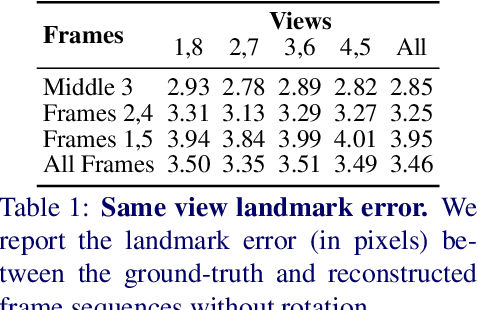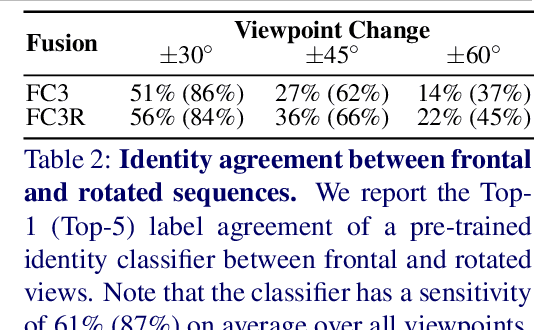Learning to Deblur and Rotate Motion-Blurred Faces
Paper and Code
Dec 14, 2021



We propose a solution to the novel task of rendering sharp videos from new viewpoints from a single motion-blurred image of a face. Our method handles the complexity of face blur by implicitly learning the geometry and motion of faces through the joint training on three large datasets: FFHQ and 300VW, which are publicly available, and a new Bern Multi-View Face Dataset (BMFD) that we built. The first two datasets provide a large variety of faces and allow our model to generalize better. BMFD instead allows us to introduce multi-view constraints, which are crucial to synthesizing sharp videos from a new camera view. It consists of high frame rate synchronized videos from multiple views of several subjects displaying a wide range of facial expressions. We use the high frame rate videos to simulate realistic motion blur through averaging. Thanks to this dataset, we train a neural network to reconstruct a 3D video representation from a single image and the corresponding face gaze. We then provide a camera viewpoint relative to the estimated gaze and the blurry image as input to an encoder-decoder network to generate a video of sharp frames with a novel camera viewpoint. We demonstrate our approach on test subjects of our multi-view dataset and VIDTIMIT.
 Add to Chrome
Add to Chrome Add to Firefox
Add to Firefox Add to Edge
Add to Edge